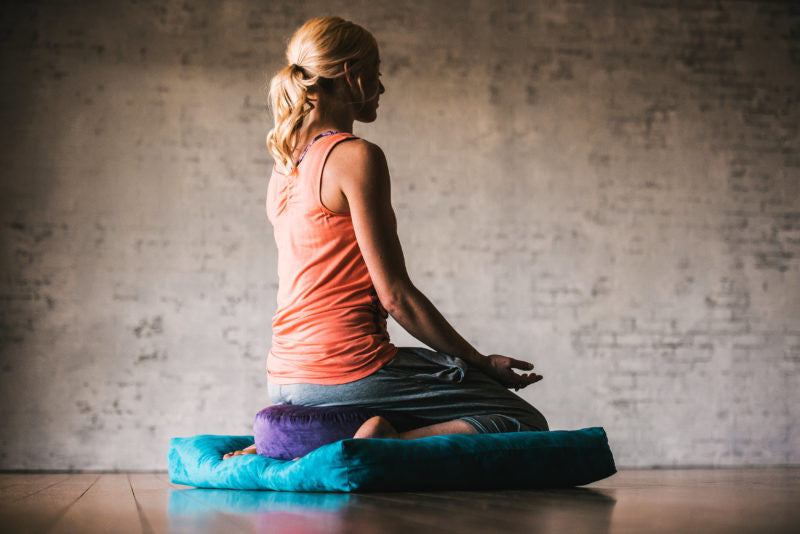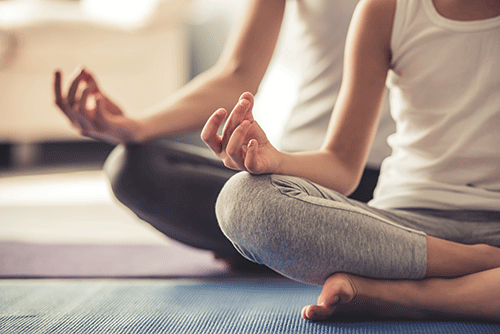How to Meditate: A Detailed Approach to Getting Mindfulness and Tranquility
Meditation functions as an effective tool for accomplishing mindfulness and psychological calm in a hectic globe. By understanding the fundamental concepts and strategies associated with meditation, people can grow a technique that enhances their general health. This conversation will describe crucial steps, from producing a helpful environment to integrating meditation right into day-to-day regimens. As we explore these elements, it comes to be clear that the trip to mindfulness is not just about the act of sitting in silence, however instead concerning cultivating a deeper connection with oneself and the world around us. What might this improvement require?
Recognizing Meditation
Recognizing reflection involves understanding its fundamental principles and techniques, which function as the structure for the technique. At its core, reflection is a psychological exercise focused on promoting leisure, constructing inner power, and establishing empathy and insight. The technique urges people to focus their attention, frequently through techniques such as deep breathing, visualization, or concept repeating.
Meditation can be categorized right into various designs, consisting of mindfulness, transcendental, and loving-kindness meditation, each with distinct objectives and methods. Mindfulness meditation emphasizes present-moment recognition and non-judgmental observation of thoughts and sensations, while transcendental reflection involves the usage of certain rules to go beyond average mind. Loving-kindness reflection concentrates on creating a mindset of love and compassion in the direction of oneself and others.
No matter the technique utilized, the primary objective remains regular: to cultivate a much deeper understanding of the mind and its patterns. This self-awareness promotes psychological durability, quality of thought, and an extensive sense of calm (How to meditate?). By comprehending these principles and strategies, individuals lay the foundation for an effective meditation technique that can substantially enhance their general health
Getting Ready For Your Practice
Prior to beginning your meditation technique, it is important to develop an atmosphere for focus and leisure. Select a quiet area where you are not likely to be disturbed. This might be an edge of a room, a yard, or any kind of place that evokes a feeling of peace. Make sure that the location is free and clean of mess, as a neat setting can help get rid of the mind.
Consider the lighting, as natural light can improve your mood and energy. Soft, warm illumination is commonly extra relaxing than extreme fluorescent lights. In addition, pick a comfy temperature level, ensuring that you are neither too hot nor too cold.
Incorporating elements that advertise peace can further boost your experience. This could consist of soft paddings or coverings for convenience, in addition to soothing scents from important oils or incense. It can also be advantageous to have a timer set for your reflection session to protect against disturbances from clock-watching.
Standard Meditation Methods

One more reliable technique is body scan reflection. This involves psychologically checking your body from head to toe, noticing any type of locations of stress or discomfort and knowingly loosening up those muscles. This method cultivates a much deeper connection between your mind and body.

Last but not least, loving-kindness reflection concentrates on cultivating concern towards yourself and others. Calmly repeat phrases of goodwill, boosting emotional health article source and interconnectedness. Each of these strategies works as a structure for your reflection journey, permitting you to discover the approach that reverberates best with your individual method.
Keeping Focus and Mindfulness

Establishing a specialized meditation area can improve the capability to preserve mindfulness. A peaceful, clean atmosphere reduces diversions, enabling deeper immersion in the method. Additionally, setting a time limit can help manage assumptions; beginning with much shorter sessions may relieve the transition into longer techniques.
Making use of strategies such as body scanning or observing experiences can additionally strengthen mindfulness. These approaches urge experts to remain present and engaged with their physicality, anchoring their attention in the minute. Normal technique is necessary; the brain develops resilience over time, creating a stronger capacity for emphasis.
Incorporating Reflection Into Every Day Life
Including meditation into everyday life can transform routine tasks right into opportunities for mindfulness and self-reflection. By incorporating mindfulness techniques right into typical tasks, people can grow a greater feeling of visibility and peace among the busyness of everyday life.
Begin by recognizing minutes throughout your day where you can stop briefly and exercise mindfulness. During your morning commute, emphasis on your breath or the sensations of the setting around you. In the kitchen area, strategy cooking as a meditative method, savoring the structures, shades, and scents of the active ingredients. Even ordinary tasks like walking or cleaning dishes can end up being possibilities for meditation by guiding your focus to the sensations of motion and the audios surrounding you.
Additionally, alloting committed times for meditation can strengthen its method. Beginning with brief sessions, gradually enhancing duration as you end up being a lot more comfy. Usage suggestions or cues-- like a particular time of day or a soothing noise-- to develop uniformity.
Eventually, the goal is to weave mindfulness into the fabric of every day life, allowing you to approach each minute with purpose, therefore improving your general sense of well-being and clarity.
Verdict
In verdict, efficient reflection needs a quiet atmosphere, a comfortable setting, and a focus on the breath. Normal meditation, also in brief sessions, cultivates a deeper link to the present minute, ultimately leading to better calm and psychological clarity in everyday life.
Meditation can be categorized internet right into various designs, consisting of mindfulness, transcendental, and loving-kindness meditation, each with distinctive functions and techniques. Mindfulness his explanation meditation stresses present-moment awareness and non-judgmental monitoring of thoughts and sensations, while transcendental reflection involves the use of certain rules to go beyond common idea processes.With your meditation area prepared, it's time to discover various fundamental reflection techniques that can help grow mindfulness and internal tranquility.Regularly keeping emphasis and mindfulness throughout meditation can be difficult, particularly for those brand-new to the practice.Establishing a specialized reflection room can enhance the ability to preserve mindfulness.
Comments on “Learn About Effective Techniques on How to Meditate? for Beginners”